|
|
|
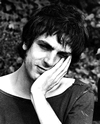 |
Syd Barrett (1946-2006)
After founding the now-legendary band Pink Floyd in 1964, singer-songwriter Syd Barrett was one of Britain's most promising young voices. A former art-school student, Barrett was a key force in the band's rich, futuristic sound. But fame and its attendant social pressures proved difficult, and he sought solace in drugs. In 1968, Barrett quit the band. A cult figure whose elusive persona inspired many fan clubs, Barrett -- who readopted his birth-name, Roger -- lived for his last years in a Cambridge suburb where, as his brother-in-law has told a British interviewer, he no longer played music but enjoyed "his own company now rather than that of others." |
Barry Bonds (1964-)
Arguably the greatest player of his generation, having hit 762 home runs (more than anyone else in baseball history), the San Francisco Giants left fielder remains one of pro sports' most talented and most controversial athletes but also one of its most definitive loners. He trains alone whenever possible, socializing with fellow players very little. Nearly every newspaper article about him mentions this fact. Many, predictably, also call him aloof, arrogant, hostile and cold. In an ESPN interview, Bonds noted that the media would be much kinder to him "if I could just smile at everybody and wave." Asked how he felt as his team drew close to winning the World Series in 2002, he told the San Francisco Chronicle, "It's hard enough for me to come in here and talk. I want to do my talking on the field. That's where it counts." |
 |
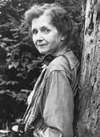 |
Rachel Carson (1907-1964)
Like her fellow loner Beatrix Potter, Carson was inspired and enthralled by solitary childhood rambles in the outdoors. Growing up in Pennsylvania's Allegheny Mountains, Carson began the lifelong love of nature that would later carry her through a career as a writer and scholar. After studying at the Woods Hole Marine biological laboratory, she received a master's degree in zoology from Johns Hopkins University in 1932 — remarkable for a woman of her era. Her prize-winning study of the ocean, The Sea Around Us, was followed by other books including 1962's Silent Spring, an environmentalist classic exposing the dangers of synthetic pesticides. |
Emily Dickinson (1830-1886)
A veritable poster girl for reclusiveness, this Amherst, Massachusetts poet spent the last sixteen years of her life at home. Never going out, she addressed visitors only through a partly closed door. Yet the image of the hermitlike spinster is at odds with the bold, striking poetry - much of it about feelings of love and friendship — that Dickinson wrote, mostly in secret. Upon the poet's death, over 1,700 poems were found in a drawer: virtually a life's work. Several years later, the first small selection of these was published, and Dickinson has since soared to prominence as one of America's greatest writers. |
 |
 |
Joe DiMaggio (1914-1999)
The San Francisco-bred winner of three Most Valuable Player awards led the New York Yankees to ten American League pennants and nine World Series championships. "Joltin' Joe" was and remains a pop-culture icon, but fierce love of privacy in a man whose profession was all about "playing well with others" pissed off a lot of people. Sportswriters regularly sniped that DiMaggio was vain, tyrannical, imperious, brooding and moody; the more merciful among them merely called him shy and awkward. One reporter dubbed him "a kind of male Garbo." Arranging the small private funeral of his ex-wife, Marilyn Monroe, DiMaggio sternly forbade fans and many top stars from attending — and promptly pissed off more people. |
Piet Mondrian (1872-1944)
This Dutch painter is known for the angularity of his style — bold opaque squares factory-perfect, outlined in inorganic black, although early in his career he produced expressionistic landscapes in subtle colors. Ascetic, devoted to working in complete isolation, Mondrian arranged his studio to embody his geometric style. No natural forms were permitted within, its white walls were adorned here and there only with cardboard squares in primary colors. "He could have lived equally easily in any town in the world, so long as he had a room arranged according to these laws," one rare visitor later noted. "It was the dwelling of a grand solitaire." |
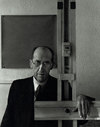 |
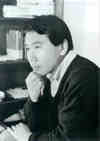 |
Haruki Murakami (1949–)
Haruki Murakami became one of Japan's all-time best-selling novelists with big, surrealistic, pop-culture-flavored books such as A Wild Sheep Chase, which features a talking sheep, and The Wind-Up Bird Chronicle, whose hero spends a great deal of time at the bottom of a well. (The typical Murakami hero is a world-weary, wry and solitary guy.) Overnight celebrity did not rest well with the reclusive author, who left Japan and spent many years in self-imposed exile in Europe and America. He once told an interviewer that his writings return again and again to "the figure of the loner ... because it isn't easy to live in Japan as an individualist or as a loner. I'm always thinking about this. I'm a novelist and I'm a loner, an individualist." |
Thomas Merton (1915-1968)
This Columbia-educated Kentucky monk decided to become a hermit in the 1960s, and is now hailed as one of America's most prolific and moving religious writers. Producing book after book of his own, Merton also published English renditions of the works of Lao Tzu and kept up a lively correspondence with celebrity pen pals ranging from Georgia O'Keeffe to the Dalai Lama. To an eager outside world, which read about him in lifestyle magazines and bought his books, he was an interpreter of the solo life, producing journals that stand today as some of the most extensive and accessible accounts ever written of living alone. Yet Merton was intimately invested in his fellow human beings, and was a sharp critic of racism, economic injustice, and militarism. |
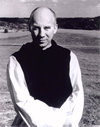 |
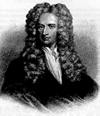 |
Isaac Newton (1642-1727)
A small and fragile child, Newton was more interested in reading, solving math problems and tinkering with mechanical devices than in playing with other boys or even playing ordinary boyish games. This aspect of his personality never changed. As a student at Cambridge University, Newton studied logic, geometry, trigonometry, astronomy, philosophy and optics, reading in his spare time the works of Kepler and Descartes. Subsequently working at home, alone as was his habit, this scientific genius discovered the law of gravitation, laid the foundations of celestial mechanics, and constructed the world's first reflecting telescope. Newton' epitaph was written by the celebrated poet and fellow loner Alexander Pope. |
Beatrix Potter (1866-1943)
Growing up in virtual isolation, Potter was never sent to school, as was typical for sheltered upper-class British girls of her era. Seldom leaving the nursery of her home, she looked forward longingly to family holidays in the countryside, where she wandered far and wide collecting plants, rocks and animals to draw and study. The young artist and writer kept some of the live creatures as pets. Later they took shape as the protagonists of such classic tales as The Tale of Jemima Puddle-Duck and Squirrel Nutkin. After unsuccessfully attempting a career in scientific illustration, Potter took up children's books in her thirties, and remains to this day one of that genre's best-loved icons. |
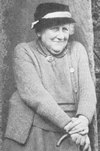 |
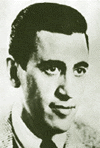 |
J.D. Salinger (1919-)
Salinger's first novel, Catcher in the Rye, was a classic narrative of disaffected youth and became a bestseller in 1951. Soon afterward, this World War II hero — Salinger had participated in the invasion of Normandy and other decisive battles — decided to remove himself from the public eye. Fame and its trappings, small talk and hordes of sycophants, disgusted him. Turning down interview requests, refusing to allow his photograph to appear on the jackets of all subsequent books, the author secluded himself in his New Hampshire home, where he practiced yoga and Zen meditation — and has steadfastly remained ever since. Salinger's last published work appeared some forty years ago, but rumor has it he has never stopped writing. |
|
|
|